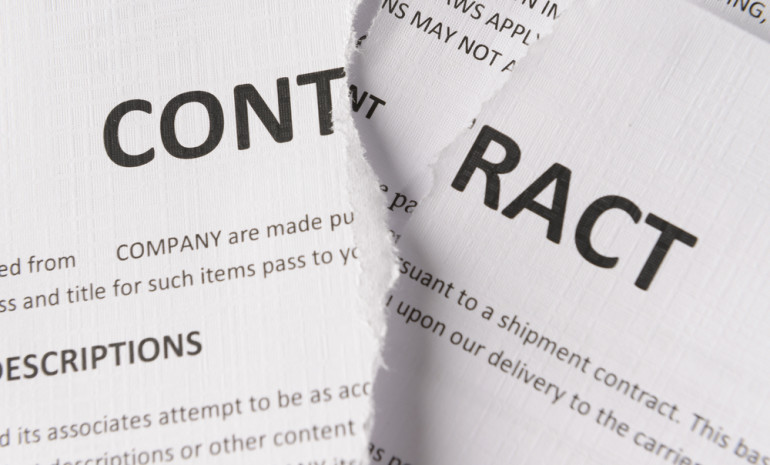
After a long search, you have finally found a great international partner and are ready to negotiate the contract. You send your standard contract to your prospective partner and suddenly the “love fest” is over. Your soon-to-be partner is taken back by the length, complexity and 1-sided terms of the agreement.
I have seen deals fall apart time and time again once a standard contract is shared between brands and prospective international partners. The problem is that company lawyers are hired to protect their company or client’s interests at all costs. When taken to an extreme, it can lead to sudden distrust and endless months of negotiation (if the other side is even willing to consider it). The key is finding a compromise where both companies are protected and the terms make good business sense.
After years of doing contracts, below are some of the lessons I have learned for developing international contracts that work for both sides:
1) Keep contracts as simple as possible and use straightforward language.
Excessively long contracts full of unnecessary “legalese” will not only be confusing and costly, but often will take months to negotiate. Keep in mind that if the language spoken in your target country is different than yours, the contract will be translated, resulting in a greater likelihood of misinterpretations and misunderstandings.
Tip: Work with your attorneys on a contract that will protect your company’s interest but also make good business sense. Don’t overcomplicate a contract for the sake of complication.
2) Keep in mind that the company that has the least to gain by a collaboration will typically dictate the contract terms.
If you are not a “hot” brand or are relatively unknown in the country you wish to enter, it may be hard for you to dictate tough terms to a strong retail partner, distributor or licensee. In fact, I have seen several deals when the retailer will not even entertain your contract but will instead, require that you sign their non-negotiable contract.
Tip: Be cognizant of who needs the deal more. Sending a long, 1-sided contract to a prospective partner that is in an obviously stronger negotiating position can create animosity and put the deal at risk.
3) Don’t rely on your contract to necessarily protect you against a breach by your international partner.
Bringing an international partner to court is often a long and expensive process and usually makes sense only if you have a lot to gain or lose. Even if the contract jurisdiction is your home country, the local country courts still have to enforce the ruling. Keep in mind that in certain countries, like China, clauses in a contract may not even stand up in a Chinese court often due to inconsistencies in translation.
Tip: Have your contract reviewed and blessed by local counsel in the country where you will do business to ensure that the terms are legal in that market. Take time to find a partner who is reputable, ethical and has similar cultural values as your company. Going to court should always be a last resort.
4) Make sure that ambiguous terms or clauses are clearly defined so that they are not open for interpretation.
This will significantly reduce misunderstandings between you and your partner. For example, when including a minimum marketing guarantee, make sure that you clearly define what costs constitute “marketing”. Does marketing include tradeshow booth rentals? Fixtures? Website development costs etc.?
Tip: Common legal terms such as “best efforts” and “reasonable efforts” should also be spelled out so you can measure whether a partner’s actions or lack of action constitute a breach.
5) When determining milestones to hit for automatic renewals, focus on your second to last year of minimums of a contract term.
Since product orders must be placed with factories months in advance, in order to have continuity, you will need to negotiate a contract prior to the end of the contract term. Many companies focus on the last year but typically, you must make a decision prior to shipping the full year’s goods.
Tip: Establish a milestone for the 2nd to last year of the term when doing an automatic contract renewal, rather than the last year. Even without an automatic renewal clause, your 2nd to last year will be the year that you look at when considering renewing your partner for another term.
6) Make sure to require that not only reports, but also legal documents are translated in your language.
I remember seeing a contract requiring the submission of different legal documents, i.e., leases, insurance contracts etc. The problem was that they were sent in Chinese and no one could understand them.
Tip: Keep in mind the amount of work, time and money it takes your partner to translate complicated documents. Sometimes, it may make sense to request the original documents in case you need them in the future but only require a summary of the terms in your language.
7) Do not include overly onerous requirements that your team realistically will never request (and if requested) never review due to a lack of manpower.
Nothing will frustrate your international partner more than requiring its team to put together time-consuming reports that are never looked at or really needed. In fact, contract clauses that are not enforced throughout the term of the agreement may set a precedent and preclude you from citing a lack of submission as a breach in the future.
Tip: Have your partner focus their efforts on developing and sharing meaningful business reports that are necessary for analyzing, understanding and improving the business.
8) Make sure to spell out the process for dealing with export quality issues.
I have seen international partners meticulously go through every item received and then want to return products with tiny issues (ie., dirt, hanging thread etc.) and be compensated. This can turn into a logistical and costly nightmare for you.
Tip: In an effort to avoid quality disputes, it may be best to add a clause stating that your product price includes an allowance of 1-2% for damaged product. Any amount exceeding 1-2% will be credited, if properly documented and photographed. You should also have the option to have the goods returned in the event of a serious quality problem.
9) Do not allow international partners to issue 3rd party contracts without your approval.
I have seen cases where a brand has a contract term with a distributor for 3 years, only to find out when the contract is terminated that the distributor had issued store contracts for 5 years. This results in messy transitions with stores selling your product and may force you to work out deals with 3rd parties in order to ensure smooth transitions.
Tip: Do not allow 3rd party contracts without your approval. Make sure that the terms are consistent with your partner’s contract in order to avoid unnecessary headaches in case of termination.
10) When dealing with processes that may change, use addendums and put in wording that gives you flexibility.
This is important as when technology, management or situations change, company’s policies and processes may change as well. You don’t want to get stuck with procedures that become outdated over time and no longer work in your current situation. Examples of these types of processes are approval procedures, marketing allowances, customer service procedures etc.
Tip: When referring to these processes in the contract, put in the clause “as may change from time to time” to allow you flexibility to adapt the language or procedure as necessary.





